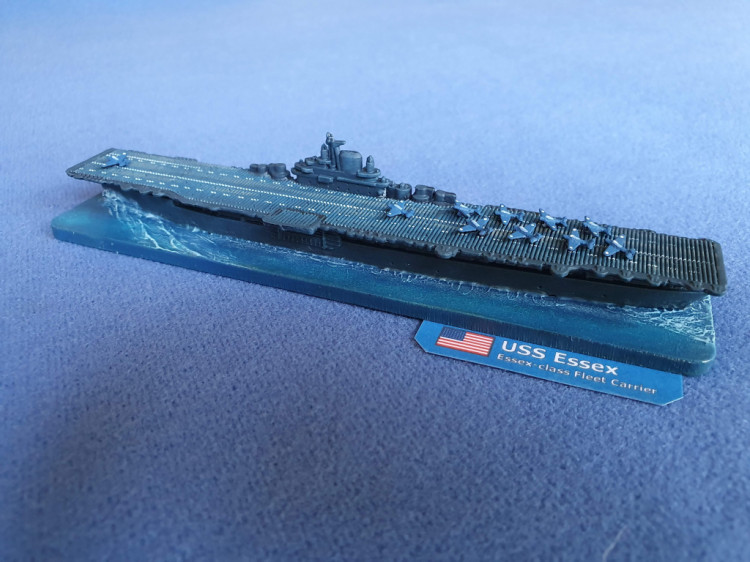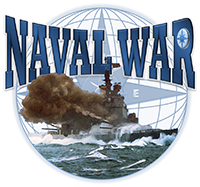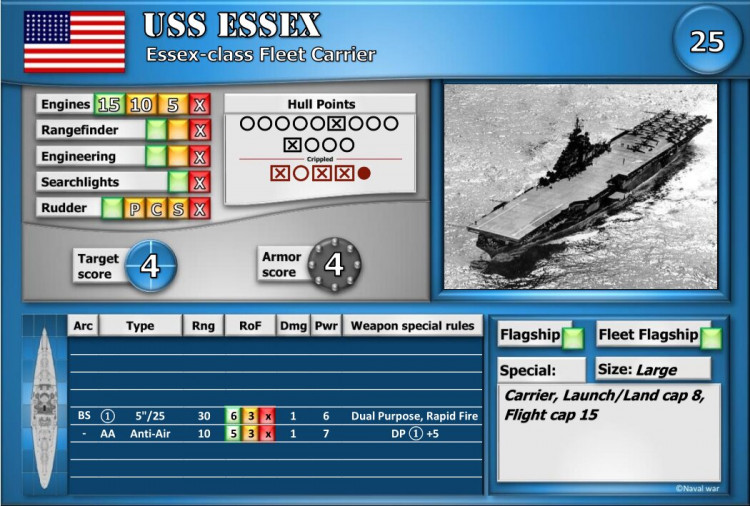
Essex-class Aircraft carrier
Description
Ships in class: USS Essex, USS Yorktown, USS Intrepid, USS Hornet, USS Franklin, USS Ticonderoga, USS Randolph, USS Lexington, USS Bunker Hill, USS Wasp, USS Hancock, USS Bennington, USS Boxer, USS Bon Homme Richard, USS Leyte, USS Kearsarge, USS Oriskany, USS Antietam, USS Princeton, USS Shangri-La, USS Lake Champlain, USS Tarawa, USS Valley Forge, USS Philippine Sea
The preceding Yorktown-class aircraft carriers and the designers' list of trade-offs and limitations forced by arms control treaty obligations shaped the Essex class’ development – a design sparked by the Japanese and Italian repudiation of the limitations proposed in the 1936 revision of the Washington Naval Treaty of 1922 (as updated in October 1930 in the London Naval Treaty). Effectively, this rejection allowed all five signatories to resume the interrupted naval arms race of the 1920s in early 1937.
At the time of the repudiations, both Italy and Japan had colonial ambitions, intending on or already conducting military conquests. With the demise of the treaty limitations and the growing tensions in Europe, naval planners were free to apply both the lessons they had learned operating carriers for fifteen years and those of operating the Yorktown-class carriers to the newer design.
Designed to carry a larger air group, and unencumbered by the latest in a succession of pre-war naval treaty limits, Essex was over sixty feet longer, nearly ten feet wider, and more than a third heavier. A longer, wider flight deck and a deck-edge elevator (which had proven successful in the one-off USS Wasp (CV-7)) facilitated more efficient aviation operations, enhancing the ship's offensive and defensive air power.

